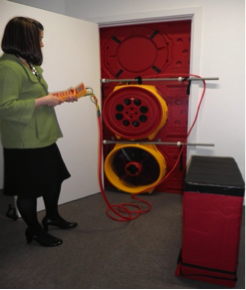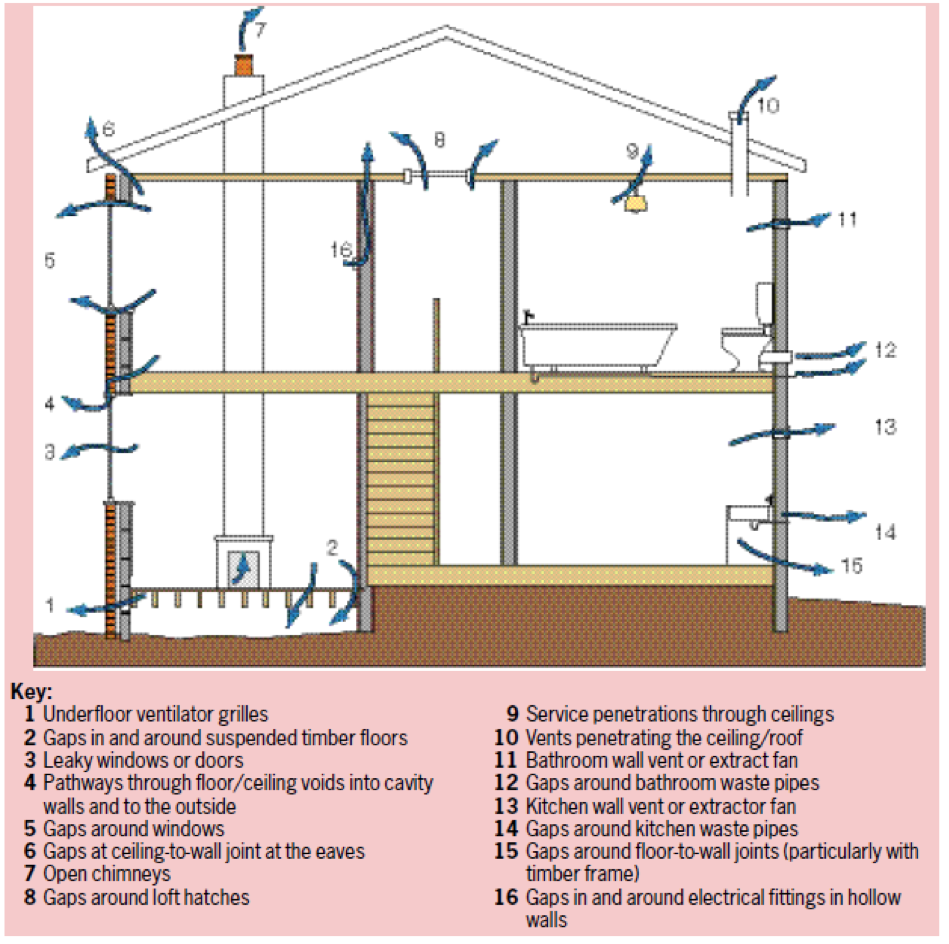Multiple Fan Blower Door System
 Improved air tightness is the principle behind the design strategy “build tight, ventilate right”. By limiting the unnecessary leakage of heated or conditioned air from buildings, a significant reduction in energy consumption and costs can be made.
Improved air tightness is the principle behind the design strategy “build tight, ventilate right”. By limiting the unnecessary leakage of heated or conditioned air from buildings, a significant reduction in energy consumption and costs can be made.
Air tightness testing shows the air permeability of the building envelope. This plays a vital role in all current energy efficiency standards from basic compliance with Part L of the Building Regulations to Passiv-Haus accreditation.
The Sustainable Building Futures’ multiple fan blower door system is designed to carry out air tightness tests on domestic and small to medium size commercial properties. Leakage rates at any predetermined pressure can be calculated together with effective leakage area and air changes per hour.
Our air tightness testing equipment features:
- fully calibrated three fan lightweight system that delivers air flow of 11.5m3/s on free flow and 11.3m3/s at 50Pa;
- lightweight, hard panel, easy to erect 10kg door;
- inbuilt automatic computer controller for each fan to control fan speed and room pressure remotely.
Tests can be undertaken in conjunction with our smoke pencils to visualise air leakage routes
What is air permeability?
“The air leakage rate per envelope area at the test reference pressure differential across the building envelope.” (Source:BS EN13829:2001). It is most often expressed as m3/(h.m2) @50Pa.
What is the air leakage index?
“The air leakage rate at a pressure differential of 50Pa, Q50, divided by the envelope area. For the parameter air leakage index the building envelope is defined as the internal surface area of the external facade.” (Source: CIBSE TM23:2000). This means how much air is moving through each square metre of the building envelope that is not ground supported, every hour, at a pressure differential of 50 Pascal.
A home with excessive air leakage can be very draughty and vulnerable to contaminants and sound. This can cause condensation to form within the building structure which in turn leads to reduced insulation performance and material degradation.
Air leakage paths in a domestic building are illustrated in the diagram below (source: BRE Good Building Guide 67: Part 1).






